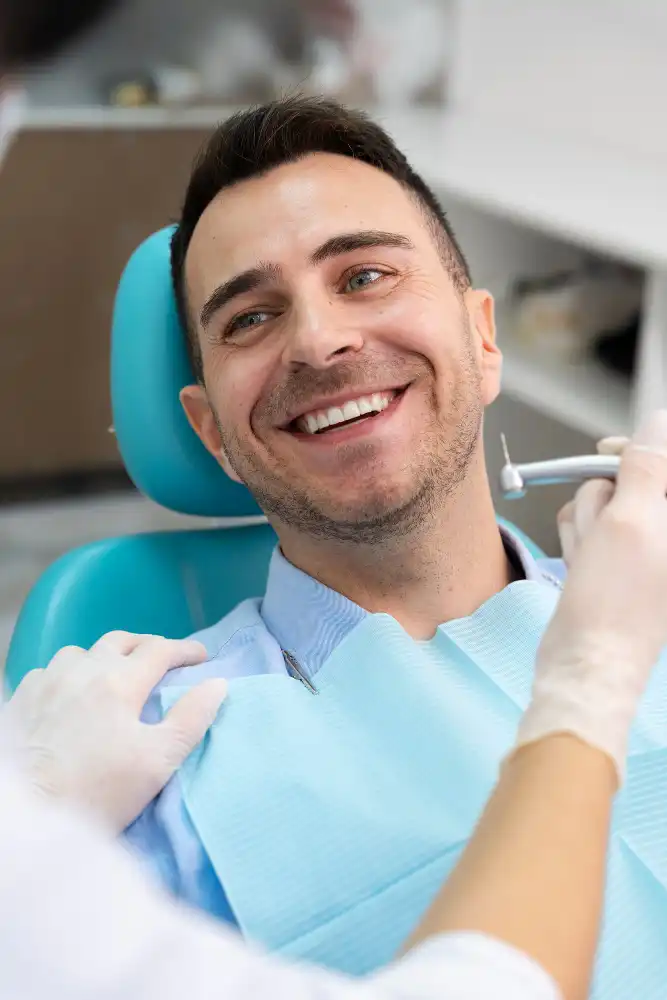Dental wax is an essential tool for dentists and orthodontists during orthodontic treatments. It is used to protect teeth and gum tissue from irritation and discomfort due to braces, wires, and other orthodontic devices. Dental wax also helps to prevent food particles from becoming trapped between the teeth and orthodontic devices.
Dental wax is made from a variety of materials such as beeswax, paraffin, and carnauba wax. Most of the waxes are flavored for a pleasant taste. The wax is usually available in strips, pellets, or sticks. Dental wax can also be purchased in ready-made forms that come in a variety of shapes and sizes.
Dental wax is applied to the teeth and gums in small amounts. It is then molded or shaped to fit comfortably around the orthodontic device. The wax should be applied every time the orthodontic device is adjusted or tightened. This helps to reduce any irritation that may occur.
When applying dental wax, it is important to use a clean, dry cloth to avoid contamination.
The wax should also be applied away from the orthodontic device to prevent it from becoming dislodged. It is important to check the wax periodically to make sure it is not too thick or too thin.
Dental wax is a convenient and economical way to protect teeth and gums from discomfort due to orthodontic treatment. It is easy to apply and remove and helps to reduce irritation and discomfort. It is also important to check the wax periodically to make sure it is not too thick or too thin.
Dental Wax for Braces
Dental wax is a product that can help make wearing braces more comfortable. Braces can cause discomfort and irritation to the teeth and gums, and dental wax is a great way to reduce this. Dental wax is a soft, pliable material that can be applied to the brackets and wires of braces to provide a protective barrier. It is a great way to prevent the wires from cutting into the gums or the cheeks and lips from rubbing against the brackets.
To apply the wax, clean the braces with water and a toothbrush and gently remove any debris. Then, take a small amount of wax and roll it between the fingers to soften it. Place the wax over the brackets or wires where it is needed and then press it into place. Rub the wax with a clean finger to help it stick better.
Dental wax should be replaced every few days or as needed. If it becomes too thin or if it falls off, it should be replaced immediately to prevent irritation. To remove the wax, use a toothbrush and water.
Dental wax is an easy way to make wearing braces more comfortable. It can help protect the gums and cheeks from irritation and it can help reduce the pain associated with braces. It is important to use only dental wax specifically made for braces and to replace it frequently as needed.
Dental Wax for Broken Teeth
Having a broken tooth can be a scary experience. Not only is it painful, but it can also be a risk to your oral health. Fortunately, there is a way to protect your broken tooth and reduce the risk of further damage: dental wax.
When a tooth is broken, it is important to take steps to protect it from further damage. Dental wax can be used to cover the broken area and provide a barrier between the tooth and other objects, such as food particles, that could cause further damage. Additionally, the wax helps to reduce the risk of infection by keeping bacteria from entering the broken area.
Applying dental wax is relatively simple. First, the tooth should be cleaned with water and a toothbrush. Next, the wax should be warmed up and softened with a hair dryer. Once the wax is softened, it can be placed over the broken area, and then shaped and pressed into the tooth to ensure a snug fit. The wax should be left in place until the tooth is repaired by a dentist.
Dental wax is an effective way to protect a broken tooth and reduce the risk of further damage. While it is not a substitute for professional dental care, it can help to reduce pain and prevent further damage. If you have a broken tooth, be sure to talk to your dentist about using dental wax to protect it until it can be repaired.

